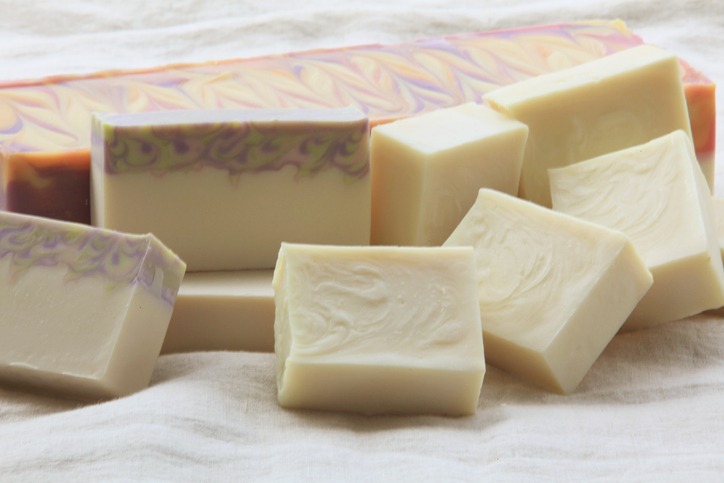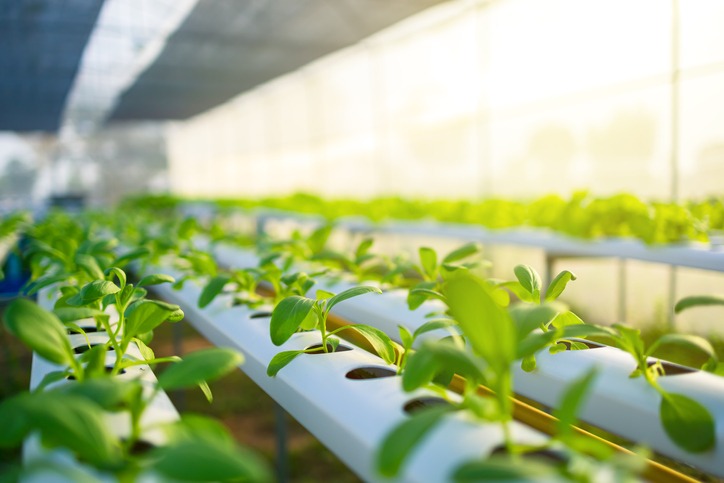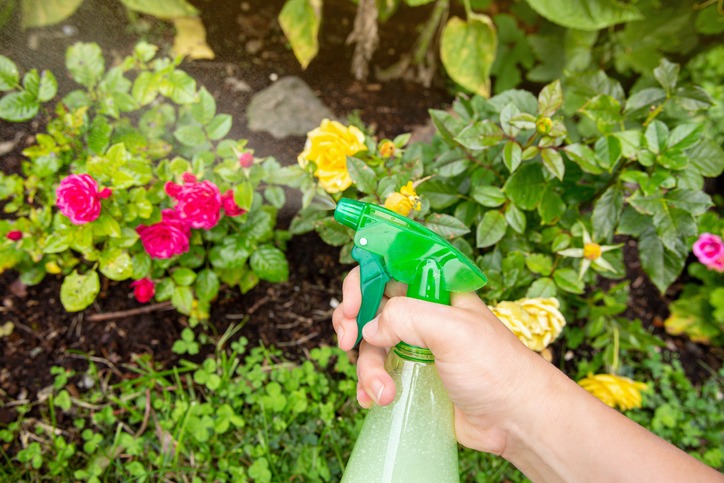Imagine this. You wake up one fine Saturday morning looking forward to watering your garden. You have a delicious breakfast, and after watching the morning news, you head out to your shed. But when you get to your plants with your watering can in hand, you realize something is very wrong.
Your plants are covered in bugs. Tiny, infuriating creatures are eating away at your beloved crops and hedges. The leaves have huge chunks missing, the stems are covered in nasty little buggers, and you can see the vile things crawling around on the ground, looking for the next plant to destroy. Before you head to the supermarket for a pesticide, we present you with a more accessible and far better solution – Soap.
Yes, besides cleaning and washing, soaps can help you get rid of those plant-sucking vermin. Startled, right? Well, I was too when I heard your body soap could be used as a guarding agent for your precious backyard garden. But at what cost? Nothing. You can use the old discarded soaps to create a homemade pesticide.
Why Use Soap?
If you are someone who considers it their responsibility to reuse or upcycle the recyclable things, this is a perfect chance to put those soap shards to good use. Besides, you are not the first to use soaps as a pesticide. They have been used for pest control for more than 200 years now.
For starters, soaps offer a quick, easy, and cheaper way to get your pesticide ready. Sometimes, soaps can be more effective and safer to use compared to commercially available alternatives. Besides, you won’t need to head to the store and procure pesticides while your garden is in the middle of an infestation.
Secondly, for someone who cares for plants as their child, leaving them to chemical-based pesticides would be brutal. Sure, most pesticides are chemical-free and completely harmless, but you wouldn’t be growing your food if you didn’t believe some kind of tiny changes are possible commercial pesticides. While soaps being environmentally friendly solutions can help you contribute to nature as well.
And lastly, if you’re just a Do-It-Yourself kind of guy. Perhaps you like to give everything a personal touch, and going the extra mile to protect your garden with a pesticide you created is something that appeals to you.
Which Soap Should You Choose?

You cannot use just any soap to exterminate or drive away pests from your garden. This might be tricky to understand, but proper soap is needed; no detergents, no beauty soaps, no antibacterial soaps. Only a bar of soap in its purest essence will do the trick here. The standard body and face soaps we use today are diluted with other foreign beautifying and skincare agents. These soaps have a lower efficacy or punch required to keep the pests at bay.
Despite being harmful to the skin, Ivory and Castile soaps are better suited for pest control. Our recommendation? Fels Naptha laundry soap. It is being widely used as an insecticide due to its proven effectiveness against all kinds of plant pests. The FelsNaptha soap contains vegetable oil or fatty acids that are considered the primary active ingredient used in bugs and vermin.
Some chemical-free detergents and liquid dishwashing soaps may also prove fruitful against harmful insects. However, it is essential to use lower concentrations of these soaps. Higher concentrations might harm the plants themselves as they are not specifically designed for pest control.
How to Prepare Your Insecticidal Soap
The method of preparing your pesticide with any of the soaps mentioned above is straightforward. The only thing you need to be aware of is that you don’t overdo the concentration and end up harming your plants. To prepare a perfect solution, however, we are going to assume you are using FelsNaptha laundry soap.
To start, you need to take 1 quart of warm water, and then you need to grate about one inch of FelsNaptha soap into the water. Once done grating, mix the solution until the soap gratings have perfectly dissolved in the water. You can now store the solution for later use or use it immediately. We highly recommend keeping the concentrate in an air-tight container for storage purposes to retain effectiveness.
Ways to Amplify the Insecticidal Soap
When you’re ready to use the mixture, add a quart of regular water to your spray bottle and follow it up by adding just a teaspoon of the concentrate you made into the spray bottle. Add two tablespoons of standard cooking oil to make it stick on the plant surface relatively longer. For better protection against chewing bugs, add a teaspoon of grounded pepper or garlic. Moreover, If you want to make your plants look clean, green, and fresh, include a teaspoon of white vinegar in the solution as well. (all measurements are relative to one gallon of water)
And there you have it! You have successfully concocted a super-effective homemade pesticide spray that is harmless to your health and, provided you kept the quantities of the ingredients as specified, harmless to your plants as well.
How Do You Use Pesticide?

If you’re super protective of your plants and want to be extra careful, you probably want to know if there’s anything you should be aware of before you spray your plants. Good thinking! Because there are definitely a few things you should consider before applying the pesticide to your plants.
For starters, do not spray the entirety of your infected plants immediately. Yes, a pest infestation is terrible, and yes, you should treat it immediately for fear of it spreading and destroying your whole crop. However, you do not want to end up destroying your whole yard yourself.
To start safe, spray just one leaf and leave it for a day. Be sure to spray both sides, as the pesticide has to contact the pests themselves to take effect properly. If the leaf is still delicate on the following day, you’re good to go. If, however, the leaf is “burnt,” you need to dilute your solution with additional water. While spraying the plants, make sure not to leave the stem and ceviches unattended as aphids and mites prefer hiding in between those.
Another thing to keep in mind is that you should never spray your plants under direct sunlight. Exposure to sunlight does weird stuff to soap, and it can end up destroying your plants rather than helping them. Also, you need to regularly spray your plants until the infestation is over but not too often that you hurt your crop. One-week intervals are a safe bet.
FAQs: Tips for Using Soap to Rid Your Garden of Pests
1. Can I use liquid dishwashing soap to make insecticidal soap?
Liquid dishwashing soaps are safe for insecticidal spray as long as they don’t carry any harmful chemicals inside. If you are not sure about the ingredients of the soap, don’t add more than 2 – 3 drops of the liquid so as not to put the plants in harm’s way.
2. Can I include soap shards in the insecticidal soap-making recipe?
Soaps used in the insecticidal recipe are different from ordinary soaps we use in our bathrooms. These soaps contain high levels of fatty acids and salts, making them helpful in pest control but harmful for human skin. As for the leftover soap shards, it wouldn’t dilute the recipe if you included one alongside. Just make sure not to make the solutions too concentrated.
3. How often should I spray insecticidal soap?
Weekly spray for a month can actively defend against mild pest infections. In case of severe mites and pest infestation, spray your garden every four days. Spraying high extended quantities of homemade insecticidal soap can even destroy your plants. If it appears you are not making any progress, add two tablespoons of cooking oil to the solution to make it stick longer on the plant surface.
Conclusion
Now that wasn’t hard at all, was it? Easy to cook up and simple to use. If you had qualms about using store-bought pesticides and an itch to do something yourself, this hopefully scratches that itch and puts you at ease. Of course, hopefully, you’re only here for educational purposes and don’t have a garden infestation. If you do, it’s time to roll up your sleeves and get close and personal with your crops. Yes, even more so than usual. Good luck!

